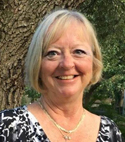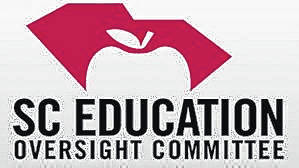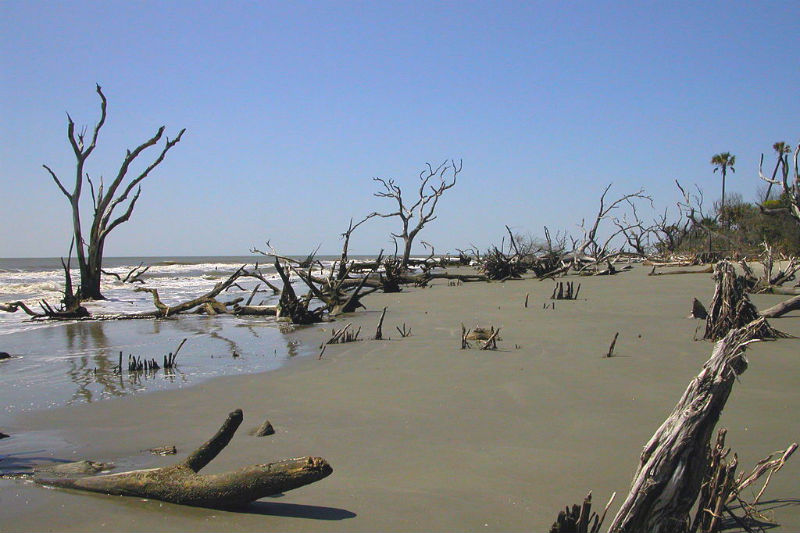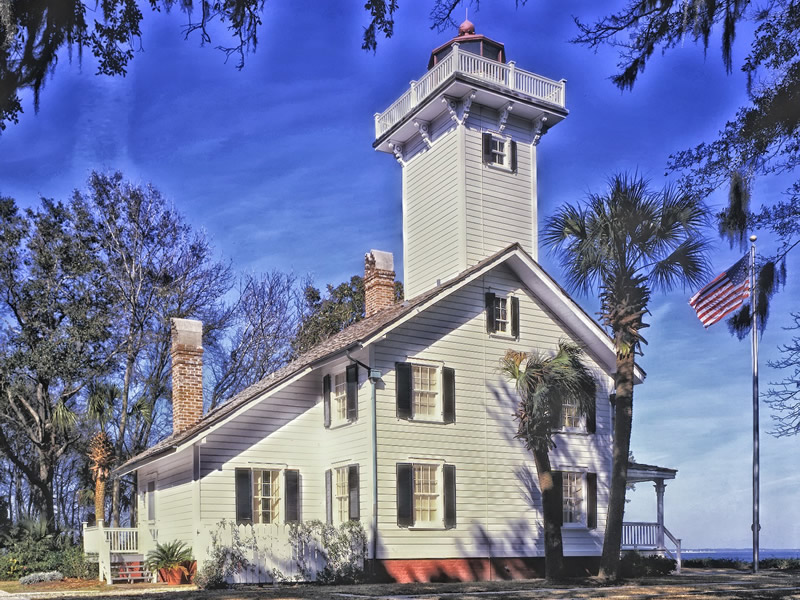NEWS: Lawmakers look for ways to cut school dropout rate
NEWS BRIEFS: Busy week on the nuclear front, more
CALENDAR: More virtual learning and Santee Cooper review
COMMENTARY, Brack: S.C. leaders offer history, fiction summer reading suggestions
SPOTLIGHT: South Carolina Farm Bureau
MY TURN, Palm: Control flooding better by using what you’ve got: the coast
FEEDBACK: Readers respond to articles on data warehouse, lynchings
MYSTERY PHOTO: Clue in tall structure
S.C. ENCYCLOPEDIA: Josephine Pinckney
NEWS
NEWS: Lawmakers look for ways to cut school dropout rate

By Lindsay Street, Statehouse correspondent | An increase in high school students dropping out is prompting questions of what the state can do to stanch the rate.
“We can’t just let these kids keep falling through the cracks,” S.C. Rep. Lin Bennett told Statehouse Report. The Charleston Republican serves on the House Education and Public Works Committee. “I don’t think we need to drag our feet on it.”

The S.C. Department of Education released dropout data last month that showed a slight uptick in the rate of dropouts to 2.4 percent during the 2016-17 school year after consecutive years of a declining dropout rate. It has raised alarm bells for education advocates and lawmakers.
While most of South Carolina’s 84 [school districts in 2016-17 lowered their rates of students dropping out, 32 districts saw a jump in the rates, which caused the state’s overall rate to increase.
The annual Report on Student Dropout Rates showed that the state increased from 2.3 percent dropouts among all grades in the state in 2015-16 to 2.4 percent the following year. That’s after the state saw a decline in the dropout rate since 2014.
Some of the highest rates of dropout were seen in these districts: South Carolina Public Charter (7.1 percent), Laurens 55 (5.1 percent), Abbeville (6.0 percent) and Florence 3 (6.2 percent).
In the 2016-17 school year, there were 5,341 students who dropped out public high schools of the 223,647 students enrolled in the state, according to the report. Students who receive federal or state aid, students with disabilities, students not proficient in English and nonwhite male students had the highest dropout rates.
 “It’s not improving. It’s too many. So what do we do?” Education Oversight Committee Executive Director Melanie Barton told Statehouse Report. “For every report, that’s the first question legislators should be asking: so what do we need to do?”
“It’s not improving. It’s too many. So what do we do?” Education Oversight Committee Executive Director Melanie Barton told Statehouse Report. “For every report, that’s the first question legislators should be asking: so what do we need to do?”
Bennett said she was most concerned about the minority school districts that did not improve or worsened.
“The ones that didn’t improve — Charleston County being one of them — were so bad they pulled everyone down,” she said.
Raising the dropout age
One of the solutions floated by South Carolina lawmakers is raising the dropout age. This past year, the bill found bipartisan support, including from Bennett, but that wasn’t enough in to bring the bill out of committee and to the House floor for a vote. Similar efforts in 2010 and 2016 sessions failed.
South Carolina is one of 10 states that allow students to legally end their public education at 17 years old without a diploma. About a quarter of all dropouts occur at every high school grade level, meaning some students are 17 years old as freshmen and drop out then. Fifteen states allow students to dropout at 16, and 24 states allow students to drop out at 18. Texas mandates school attendance until a student has received a diploma or is 19 years old.

S.C. Rep. Raye Felder, R-York, previously opposed raising the dropout age. But as the state works to update truancy laws, she said she is now more open to raising the age and said it may help.
“I feel sure that the legislature will continue to look at the possibility of increasing the age of compulsory attendance,” she wrote in an email to Statehouse Report.
But raising the dropout age doesn’t fix the real problem of “disengagement,” Addis said.
“Dropping out is usually a gradual disengagement process that begins several years before the actual exit time,” he said. “Raising the age primarily delays the exit rather than changes the decision.”
He said a disengaged student could have discipline problems during that extra year.
“A more effective approach is to intervene early with resources and people who can help to remediate some of the risk factors before the disengagement goes too far,” he said.
Other solutions
Bennett is already thinking of other solutions to introduce in January. One idea she is considering is for the state to offer more trade-school type opportunities in high school.
“We need to offer alternatives so that when children get into school there can be different kinds of diplomas. Give them an opportunity. Give them a skill of some sort,” she said. “I think we could save a lot of them if we gave them an opportunity that might be more hands-on than classroom structure.”
Felder also saw an opportunity for more trade-school training.
“Allowing students to have career training and vocational programs that interest them is an opportunity to build momentum for the students to stay engaged in educational opportunities,” Felder said.
Barton said the state needs to become better at assessing students going into the ninth grade to determine if they are “on track to graduate.” She said students who are on track in the ninth grade are four times more likely to graduate.
“The EOC and a panel that is reviewing the accountability system are considering a similar indicator for our schools,” Barton said.
Addis said that while there are steps the state can take, the best steps are taken locally.
“When a local school or community makes a serious gain in graduation rates over a few years, there is almost always a strong school-and-community movement to do so,” he said. “We also see that when this happens, the local school and community do not implement a canned program or an external fix, but instead carefully and strategically analyze their own situation, determine root causes, carefully and deliberately develop a locally-appropriate plan, and carefully and faithfully carry out that plan over time.”
Addis said South Carolina lawmakers can look to states like Mississippi and Maine, where state legislatures have mandated local school or system dropout prevention plans.
“This can work if done right,” he said.
- Have a comment? Send to: feedback@statehousereport.com
NEWS BRIEFS
BRIEFS: Busy week on the nuclear front, more

Staff reports | It’s been a busy week for all thing nuclear that are related to the multi-billion-dollar demise of the V.C. Summer nuclear plants in Fairfield County.
- On Thursday, a federal judge said no to a Monday request by SCE&G to stop a temporary 15 percent rate cut passed by lawmakers earlier this summer.
- The utility’s parent, SCANA, saw earnings drop to $8 million in the second quarter.
- This week about the time of the one-year anniversary of SCE&G and state-owned utility Santee Cooper shuttered the nuclear project $9 billion in debt, SCANA shareholders rebuked executives and voted to merge with Dominion Energy, according to this story. But it appears executives of the utility parent could still get their golden parachutes.
- And on Tuesday, attorneys working for organizations supporting ratepayers filed a motion to let customers find out if they must continue to pay for the failed nuclear project before any merger with Dominion.
“Deciding whether the Dominion deal offers any benefits before first deciding whether customers owe a single penny for SCE&G’s $5 billion hole in the ground is putting the cart before the horse,” said Will Cleveland, an attorney for the Southern Environmental Law Center, in a press release. “Only after we know the full cost can we get a complete understanding of whether a merger with Dominion is in the customers’ best interest.”
Frank Knapp, president and CEO of the S.C. Small Business Chamber of Commerce, said he supported the motion: “We believe that it is in the best interest of all SCE&G ratepayers to resolve the issue of permanent rate reduction of electric rates for the utility in light of the abandoned nuclear plant issue. Only then should the Public Service commission hold a hearing on the proposed merger between Dominion Energy and SCANA.”
In other news from this week:
Green from greenspace. South Carolina’s state parks are pulling in record revenue, according to the S.C. Department of Parks, Recreation and Tourism. From January to May, state parks generated $3,796,335 in total revenue. That’s a 30.6 percent increase from May 2017 and a 16.5 percent jump in year-to-date revenue from 2017. Read more here.
Clyburn gets nod. U.S. Rep. James E. Clyburn, a Democrat representing South Carolina’s 6th congressional district, was named on a shortlist of black Democratic House members that could be the first black Speaker of the House. Clyburn has served in Congress since 1993 and has served as House Assistant Minority Leader since 2011. Read more here.
Revolutionary research. The next time you’re doing some Revolutionary War research, you may be able to do so from the comfort of your own home. S.C. Department of Archives and History has digitized some of the most popular Revolutionary War records and made them available online. Access the online records here.
Questions on immigration policing. Under the administration of Gov. Nikki Haley, South Carolina launched a secretive police force tasked with rounding up gang members and human traffickers. But $5 million later, the Immigration Enforcement Unit has had fewer than 10 percent of its cases involving violent crime. Read the Post and Courier report here.
Weirdest story in a while: Todd Kincannon, the former general counsel and executive director of the S.C. Republican Party, recently was arrested for “intentionally, willfully, maliciously, cruelly and needlessly” mutilating and stabbing his mother’s family dog in Greenville County. According to press accounts, Kincannon told police, ““I’m the second coming of Christ and I got a command from God to do it,” according to an incident report.” Read more.
AHEAD: More virtual learning and Santee Cooper review
By Lindsay Street, Statehouse correspondent | South Carolina’s Education Oversight Committee is poised Monday to approve four more school districts looking to join a pilot program offering online learning in lieu of inclement weather days.
![]() The Education Oversight Committee meets 1 p.m. Monday in room 433 of the Blatt building in Columbia to discuss approval of applications for the eLearning program.
The Education Oversight Committee meets 1 p.m. Monday in room 433 of the Blatt building in Columbia to discuss approval of applications for the eLearning program.
Last month, South Carolina’s Anderson School District 5 became the first school district in the nation to ditch poorly attended makeup days, making use of its Chromebook program and requiring students to attend online class when weather makes it too dangerous for them to physically attend school.
The school districts that have applied for the four final slots in the pilot program are Pickens, Spartanburg 1, Spartanburg 7 and Kershaw, according to EOC Executive Director Melanie Barton.
Barton said that by early 2019, the EOC will have a plan for the General Assembly on possibly rolling out the program statewide.
Also next week:
Santee Cooper study committee meets. A handful of lawmakers will meet 1 p.m. Tuesday in room 308 of the Gressette building to evaluate privatization of state-owned utility Santee Cooper. Members of the committee include Sens. Paul Campbell, Tom Davis, Larry Grooms and Brad Hutto; Reps. Russell Fry, Peter McCoy, Russell Ott and Murrell Smith; and Gov. Henry McMaster. The agenda lacks detail and staff could not provide further insight on exactly what the committee will discuss.
BRACK: S.C. leaders offer history, fiction summer reading suggestions

By Andy Brack, editor and publisher | Summertime and vacation conjure images of spending time with a light novel – a “beach read” – to while away the time and recharge the brain’s batteries.
But what if someone wanted to read something a little more substantive to learn about South Carolina’s history or politics? Or read a great novel that inspires?
 At the top of the history list should be “The Palmetto State: The Making of Modern South Carolina,” a 2009 examination of modern South Carolina history by Jack Bass and Scott Poole that gives context to everything going on today. It’s well-written, not too long and easy to finish in a week.
At the top of the history list should be “The Palmetto State: The Making of Modern South Carolina,” a 2009 examination of modern South Carolina history by Jack Bass and Scott Poole that gives context to everything going on today. It’s well-written, not too long and easy to finish in a week.
“It’s a history book with the theme of politics throughout,” reflects College of Charleston political science professor Gibbs Knotts, who also recommended the book. “My favorite chapter is chapter 11, ‘The Republican Rise.’ The transformation from the solid Democratic South to the reliably Republican South is one of the most consequential political changes in American history.”
If you’re looking for more detail, there’s a 716-page brick of a book, Walter Edgar’s comprehensive and outstanding “South Carolina: A History” published in 1998.
“It is my favorite for history and politics,” Gov. Henry McMaster said this week, adding “Dan Hollis’ short, out-of-print ‘A Brief History of South Carolina’ is an excellent introduction.”
Bo Moore, dean of Humanities and Social Sciences at The Citadel, also recommended Edgar’s history: “The single best, one-volume account of the full-sweep of the South Carolina experience.”
Two readers endorsed a new book, “Denmark Vesey’s Garden: Slavery and Memory in the Cradle of the Confederacy,” by Ethan J. Kytle and Blain Roberts. The New York Times called the book, set in Charleston, a “fascinating and important new historical study.”
Michael Boulware Moore, head of the soon-to-be-built International African American Museum, said he is currently reading the work. “It’s a clear and unflinching look at Charleston, ‘the capital of slavery.’ and the histories that that institution spawned.” Fellow Charlestonian Jennet Robinson Alterman, chair of SC WREN, also recommended the book.
U.S. Rep. Jim Clyburn, D-S.C., pointed to his 2015 memoir, “Blessed Experiences: Genuinely Southern, Proudly Black.” He said: “Blessed Experiences was intended to be a primer for young people interested in politics,” adding that Frank E. Jordan Jr.’s 1966 “The Primary State” on the history of the state’s Democratic Party from 1896 to 1962 might be a good first history read.
Longtime Columbia public relations guru Bud Ferillo suggested Christopher Dickey’s 2015 tome, “Our Man in Charleston: Britain’s Secret Agent in the Civil War.” Ferillo called it “a brilliant and exciting history of the anti-slavery British consul general who helped, at great personal risk, keep Britain from backing the Confederacy to continue the cotton supply.”
University of South Carolina President Harris Pastides pointed to “Slaves in the Family,” a modern classic by South Carolina’s Edward Ball. A bestseller from 1998, it won the National Book Award and launched Ball’s career. Kirkus Reviews noted, “The former Village Voice columnist displays his journalistic moxie wading through the voluminous written record (10,000 pages of family papers spanning four centuries, National Archives documents, census reports, and more) to flesh out the family character and track down slave descendants.”
 But what if you want something about South Carolina, but lighter and still serious?
But what if you want something about South Carolina, but lighter and still serious?
Several people recommended novels by Pat Conroy, such as “The Prince of Tides” and “Beach Music.” S.C. Rep. Bill Herbkersman, R-S.C., said “The Great Santini” is his favorite novel of all time because “we can all feel a little of us in that book.”
“Conroy captures the Lowcountry,” Furman professor Danielle Vinson told us. She also recommended Sue Monk Kidd’s “The Secret Life of Bees” as a South Carolina novel with oomph.
Conservation Voters of South Carolina Executive Director John Tynan of Columbia, Moore and Knotts recommended novels by Ron Rash such as “Saints at the River.”
Robinson and Charleston food author Nathalie Dupree suggested an oldie, but goodie, “Three O’clock Dinner” by Josephine Pinckney.
And Ferillo reminded us not to forget a great beach read from the beach that is just plain good: “Sullivan’s Island,” by Dorothea Benton Frank.
What are your recommendations?
- Have a comment? Send to: feedback@statehousereport.com.
SPOTLIGHT
SPOTLIGHT: South Carolina Farm Bureau
 Statehouse Report is provided for free to thousands of subscribers thanks to the generosity of our underwriters. Today we shine a spotlight on our newest underwriter, S.C. Farm Bureau. It is a grassroots, non-profit organization that celebrates and supports family farmers, locally-grown food and rural lands through legislative advocacy, education and community outreach.
Statehouse Report is provided for free to thousands of subscribers thanks to the generosity of our underwriters. Today we shine a spotlight on our newest underwriter, S.C. Farm Bureau. It is a grassroots, non-profit organization that celebrates and supports family farmers, locally-grown food and rural lands through legislative advocacy, education and community outreach.
S.C. Farm Bureau’s alliance of nearly 100,000 members includes everyone from foodies and fishermen to lawyers, restaurateurs, entrepreneurs, community leaders, and of course, farmers. By connecting farmers to the larger community, the organization cultivates understanding about agriculture’s importance to our local economies. The S.C. Farm Bureau explains its mission: “We deepen our collective knowledge of who, where and how food grows. We empower people to make informed choices. We grow mutually-beneficial relationships. And, we ensure the future of the family farms, locally-grown food and the rural South Carolina lands we love.”
- To learn more about S.C. Farm Bureau’s programs, click here.
- To view media and publications, click here
- For policy and legislation, click here.
MY TURN, Palm: Control flooding better by using what you’ve got: the coast

By Fred Palm, special to Statehouse Report | The geographic feature we have in South Carolina in abundance is our meandering, curving shoreline many times longer than its linear measure.
It can be our saving grace, if we employ it well for flood control. We should take advantage of its advantages.

Specifically, a living shoreline orchestrated and using enhancements for water retention and wave dissipation characteristics, can provide a strategic route to make land use feature decisions that are more effective at lower costs to the taxpayer than a variety of alternatives.
It is the nature we see and traverse that we should use in the first instance, in abundance if we can, and capitalize upon exclusively. Having ruled out its effectiveness, then develop alternatives. The two links below provides documents to access material for policy development that should develop flood mitigation in ways are much less costly than traditional alternatives..
With encouragement, the living shoreline policy can be adapted to the entire S.C. coastal community, creating a bulwark of energy, knowledge-transfer and shared purpose.
Wetlands provide direct, quantifiable reductions in flood risk for individual extreme events and average annual flood losses. These benefits can be readily included and advanced using existing risk industry-based tools.
Don’t underestimate wetlands
The significant benefits of coastal wetlands should not be underestimated. They should be considered and valued by public and private managers and should support the development of more and better public and private incentives for wetland conservation and restoration that is at the root of future coastal risk reduction programs.
Most important, especially for development agencies and land-use planners, is recognition of the risks of building in wetlands in the lowest elevation exposed areas cannot be overestimated. These lands are integral to erecting flood defenses as they are best employed to inhibit the inward migration of threatening high water.
Finally, the impetus, strategic direction and discipline for improving our flooded conditions lie with integration of natural defenses within coastal engineering and risk management current practices. Identifying where coastal ecosystems can provide risk reduction is essential for facilitating decisions on county and statewide coastal management, insurance and financial risk reduction.
Quantitative analyses will need to be used to support decision-making for the prioritization of nature-based solutions for high water risk reduction. This will require extensive land conservation for the strategy to be effective to which the current portfolio of preserved lands must also be employed. Wetland restoration and preservation facilitates existing and new building resilience.
An additional challenge is found in learning a different vocabulary. Information on where and how coastal wetlands and other ecosystems work to reduce risk, informs statewide coastal resiliency strategies that will demand installation of Living Shorelines that is also at the center of DHEC’s evolving coastal policy.
In addition to quantitative studies on risk reduction and storm protections, it is essential to develop a better understanding of effective restoration techniques and projects that will help sustain these ecosystems and enhance their capacity to cope with natural disasters, while continuing to provide multiple services of life support, environmental cleansing and aquifer refreshment.
Fred Palm of Edisto Island is a retired professor of oversight and investigations at the John Jay College School of Public Management and a former executive director of the Association of Inspectors General.
- Have a comment? Send it to: feedback@statehousereport.com.
FEEDBACK
FEEDBACK: Readers respond to articles on data warehouse, lynchings
To the editor:
![]() Obviously political ideology has shifted remarkably since the father of the modern S.C. Republican Party, Gov. Carroll A. Campbell Jr., established the state’s data warehouse
Obviously political ideology has shifted remarkably since the father of the modern S.C. Republican Party, Gov. Carroll A. Campbell Jr., established the state’s data warehouse
As the article (News: Data hub for education, workforce could be saved, proponents say).
corrected noted, Gov. Campbell’s creation contains medical and health information about every South Carolinian who has ever obtained a health or medical service from any state agency or state-contracted medical provider. If you received a flu shot or went to a hospital or an emergency room or received health services from any state agency, then your experience is in that data warehouse.
Odd that over those decades it has been in existence, there has been no outcry about invasion of privacy or data leakage — because redundant safeguards were built into the system.
Every person who participated — knowingly or unknowingly — received a cryptic identifier that was created by sending their personal identifying information such as their Social Security number into a closed computer system that traded the personal identifying information for another, cryptic, identifying number. From then on, that specific Social Security number was tied to that same cryptic identifying number.
The result was that whenever a specific person’s personal information was entered into any of the state’s myriad computer systems, that data in turn was fed into the closed system that generated and then maintained another alter ego number in the data warehouse. At the end of the day, the new number never could be traced back to the particular Social Security number, but the new alter ego number could be tracked throughout the state’s health agencies.
Gov. Campbell’s overarching vision was that lawmakers and state agencies could make intelligent decisions about health and medical issues.
Indeed, various “cubes” were created that focused of such major expenses as Medicaid, and I served on various committees that reviewed various research requests for access to the bulk information provided by the health experiences recorded in the cryptic identifiers. My committee recommendations went to a higher authority. I do not know where it stopped, but each request had to be submitted by a reputable and credentialed researcher under the auspices of a known and respected entity.
I later helped in formulating a nationally acknowledged “Seniors Cube,” that was linked to Medicare data that received the same encryption treatment. The impact of various diseases such as strokes could be brought into view so that a “stroke belt” could be seen in which specific geographic areas of our state were hot spots for strokes.
Budget cuts came along, and retirements removed the architects from the scene — and these projects and the ability to make intelligent budget decisions withered. Politics and ideology supplanted Gov. Campbell’s vision of data-driven decisions. And yes, there was a massive hack of state data — in an unprotected Revenue Department system. Meantime, all that health data remains safe and secure, even if neglected.
— Frank Adams, Columbia, S.C. (Editor’s note: Frank, a former editor, is a retired deputy chief of staff for the state Lieutenant Governor’s office.)
To the editor:
These data are too valuable not to be saved. Longitudinal data or data collected over time provides leads about causality and sequencing of biological events and treatment effectiveness in the health arena. This is why the USA is embarking on a massive longitudinal health data study spanning decades as that is where the mother lode of health treatments can come from. More: https://pop.umn.edu/sites/pop.umn.edu/files/2.working_paper17.pdf
These data are too valuable not to be well protected. There are ways to protect data using software technology design without the need of one controlling entity to surrender the safeguards and interests of the collectors and those whose data are collected. Application software can make a prearranged “call” to each of the controlling institution’s data stores “requesting” the particular data field, for the particular individual, so that analyses can be run and the resulting summarizing statistics developed (correlation, variance, Chi Square, Multiple R, etc.) followed by the researcher’s analysis, distribution of the findings and eventual expression into informed policy predicated on real world data and not some hair brained spurious theories about the topic. The College of Charleston has a Data Science Program and their expertise needs to be used. Bring them in on this question. More: http://datascience.cofc.edu.
— Fred Palm, Edisto Island, S.C.
Two readers appreciate column calling for markers for lynchings
To the editor:
Thanks for this article (Brack: Markers needed to remember victims of S.C. lynchings).
Such an important issue, and so necessary. Hope you’ll be encouraged to know that I am part of a small team working to secure a marker for Greenwood County.
— Ashley Woodiwiss, Greenwood, S.C.
To the editor:
I have a News and Courier clipping from about 1890 of an attempted lynching in Rock Hill. The article praises the Rock Hill minister, J. Spratt White, for stopping the lynching and goes on to describe the mob and says why it is a terrible thing.
I have always been haunted by the fact it never mentions the would-be victim’s name. (Full disclosure: The minister is my great grandfather). Many years later, John Hammond Moore ran across the same article when he was writing his book, Carnival of Blood.
I would be very interested in steps toward memorializing or at least recognizing the SC history of this terrible truth.
— Jeanie W. Presto, Rock Hill, S.C.
Send us your thoughts. We love hearing from our readers and encourage you to share your opinions. But you’ve got to provide us with contact information so we can verify your letters. Letters to the editor are published weekly. We reserve the right to edit for length and clarity. Comments are limited to 250 words or less. Please include your name and contact information.
Send your letters or comments to: feedback@statehousereport.com
MYSTERY PHOTO: A clue in the tall structure

There’s a clue in the tall structure that’s staring you in the face. So where is this building … and what is it? Send your guess to: feedback@statehousereport.com. And don’t forget to include your name and the town in which you live.
Our previous Mystery Photo
 Our July 27 mystery was another of our “close-up” mysteries. Lots of sleuths correctly identified the steeple of St. Philip’s Church in Charleston.
Our July 27 mystery was another of our “close-up” mysteries. Lots of sleuths correctly identified the steeple of St. Philip’s Church in Charleston.
Hearty congratulations to: Dale Rhodes of Richmond, Va.; Shay Shealy West, Val Valenta, Mike LeFevre and Bud Ferillo of Columbia; Charles E. Davis of Aiken; Addison Ingle of Charleston; George Graf of Palmyra, Va.; and Philip Cromer of Beaufort.
Graf, as usual, provided more context: “According to discoversouthcarolina.com, Buried in St. Philips graveyard are revolutionaries, politicians, confederates and artists. Among them are Col. William Rhett, known as the “Scourge of the Pirates,” charged with bringing the murderous Blackbeard and Stede Bonnet to justice. Edward Rutledge, a signer of the Declaration of Independence, Charles Pinckney, a signer of the Constitution, and John C. Calhoun, a US senator and vice president of the US also are interred here.”
Send us a mystery: If you have a photo that you believe will stump readers, send it along (but make sure to tell us what it is because it may stump us too!) Send to: feedback@statehousereport.com and mark it as a photo submission. Thanks.
S.C. ENCYCLOPEDIA
HISTORY: Josephine Pinckney
S.C. Encyclopedia | Poet, novelist and civic leader Josephine Pinckney was born on January 25, 1895, in Charleston into a family long prominent in the state’s history. She was a direct descendant of Eliza Lucas Pinckney and Governor Thomas Pinckney. Her parents were Thomas Pinckney, one of South Carolina’s last great rice planters, and Camilla Scott of Virginia. In 1912 she graduated from Ashley Hall School, where she helped establish a literary magazine, and later attended the College of Charleston, Radcliffe College, and Columbia University. She received an honorary degree from the College of Charleston in 1935 and was named an honorary member of the William and Mary Chapter of Phi Beta Kappa in 1934. She received numerous honors for her writing, including the Southern Authors Award in 1946.

Pinckney played a key role in the literary revival that swept through the South after World War I. She worked closely with DuBose Heyward, Hervey Allen, and John Bennett in founding the Poetry Society of South Carolina in 1920. During the following decade, Pinckney emerged as a poet of national reputation when her work, often evocative eulogies to a vanishing way of southern life, appeared in influential journals such as the Saturday Review of Literature and Poetry, as well as in numerous anthologies. Her only book of poems, Sea-Drinking Cities (1927), received praise from Donald Davidson for “a luxuriance of phrase, a quiet humor controlling deep emotion.”
Pinckney participated in other aspects of the Charleston Renaissance through her dedicated involvement in local cultural institutions, such as the Carolina Art Association, the Charleston Museum, and Dock Street Theatre. Active in the Society for the Preservation of Spirituals from its inception in 1922, Pinckney helped with the transcriptions and musical annotations for the African American songs included in The Carolina Lowcountry (1931). She also worked quietly behind the scenes of the historic preservation movement in Charleston and was posthumously honored by the American Scenic and Historic Preservation Society for the manner in which she “tactfully and persuasively, firmly and wisely” helped to restore the city’s neighborhoods and notable buildings.
During the 1930s Pinckney embraced a modernist sensibility and turned her writing talents to prose. The Virginia Quarterly Review published her two short stories “They Shall Return as Strangers” (1934) and “The Marchant of London and the Treacherous Don” (1936). Her essay “Bulwarks against Change,” which appeared in Culture in the South, edited by W. T. Couch (1934), remains an insightful commentary on the evolving South. In 1941 Pinckney published her first novel, Hilton Head, followed by the best-selling social comedy Three O’clock Dinner (1945), which made her one of America’s best-known women fiction writers. Her third novel, Great Mischief (1948), a Book-of-the-Month Club selection, was followed by My Son and Foe (1952) and Splendid in Ashes (1958). Her editor at Viking Press remembered Pinckney “more warmly” than any other of his distinguished writers of the day for the “charm and grace of her character, the intelligence of her insights into people, the delights of her Charleston ambiance tempered by her cosmopolitan ways and her irony.”
Although Pinckney traveled widely, she maintained a home in Charleston and her family plantation on the Santee River, El Dorado. Josephine Pinckney died on October 4, 1957, and was buried in Magnolia Cemetery, Charleston. In 1988, she was posthumously inducted into the South Carolina Academy of Authors.
— Excerpted from an entry by Barbara L. Bellows. To read more about this or 2,000 other entries about South Carolina, check out The South Carolina Encyclopedia, published in 2006 by USC Press. (Information used by permission.)
ABOUT STATEHOUSE REPORT
Statehouse Report, founded in 2001 as a weekly legislative forecast that informs readers about what is going to happen in South Carolina politics and policy, is provided to you at no charge every Friday.
- Editor and publisher: Andy Brack, 843.670.3996
- Statehouse correspondent: Lindsay Street
More
- Mailing address: Send inquiries by mail to: P.O. Box 22261, Charleston, SC 29407
- Subscriptions are free: Click to subscribe.
- We hope you’ll keep receiving the great news and information from Statehouse Report, but if you need to unsubscribe, go to the bottom of the weekly email issue and follow the instructions.
© 2018, Statehouse Report. All rights reserved.


